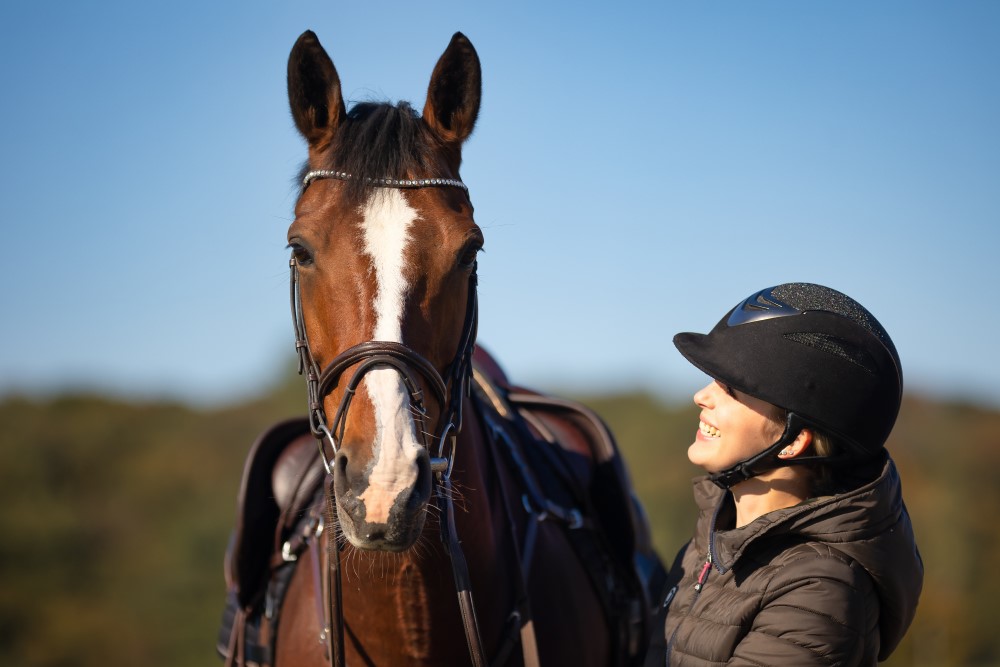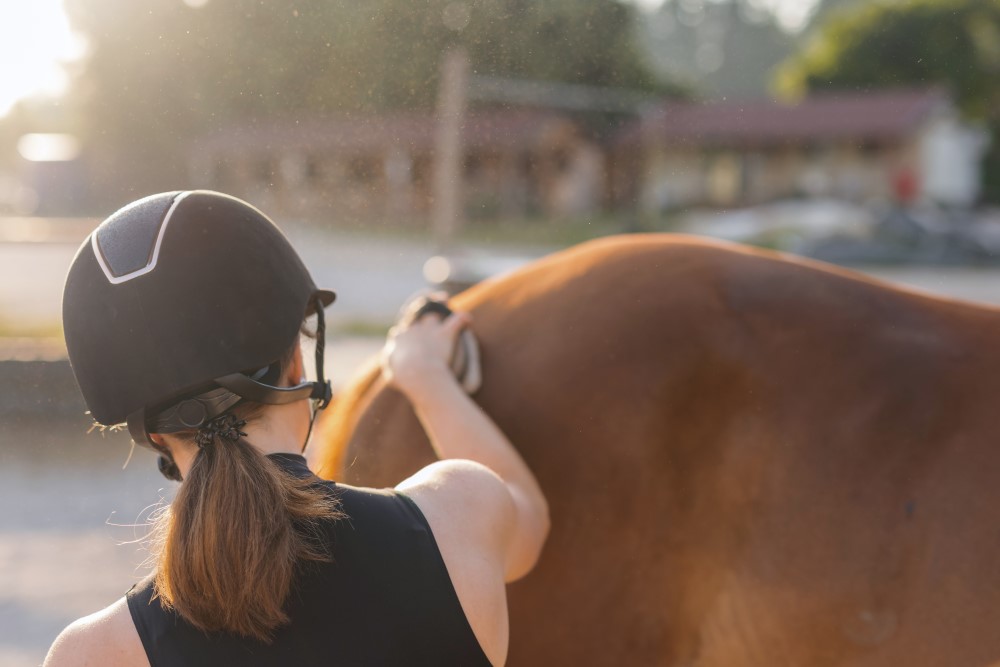The long-term consequences of repeated concussions are becoming more widely known, with many different sports implementing concussion protocol. With 10-15% of horse-related injuries involving concussion, it’s important that our sport understands how to recognise it and what action to take.
The risk of concussion when horse riding is five times higher than when driving a motor vehicle, and higher than when playing football. In all sports we are becoming aware of the risks of concussion, short and long term. These risks are cumulative. A person who experiences repeated head trauma is at risk of long-term brain damage, including dementia.
This was recognised early on in boxers and now is a real focus in football codes and equestrian sports. It is important that all of us involved with horses know how to identify a person who may be suffering from concussion, and know what to do about it.
These days medical literature puts concussion in the category of Traumatic Brain Injury (TBI), so concussion is called an mTBI, or mild Traumatic Brain Injury. But even a mild TBI can cause a great deal of suffering and disruption.

Concussion results from a direct blow to the head, such as a fall onto a hard surface, but can also result from an indirect blow to the head, such as an acceleration or deceleration or rotational injury. A brief loss of consciousness will be associated with concussion but not everyone with concussion will have lost consciousness.
The person may suffer headache, blurred vision and memory loss and confusion immediately, but symptoms may not come on for a day or two. Concussion symptoms may resolve within a few hours or may last for weeks. If a second brain injury occurs before the brain has recovered, the outcomes are far worse. This is why it is so important that anyone with suspected concussion is not allowed to get back on the horse and must not ride again until they are fully recovered. In Equestrian Australia affiliated events, any concussion must be reported, and the person is not allowed to compete again until they have been medically cleared by a doctor.
The most important signs of concussion are confusion, disorientation and memory loss. The person may not remember what has just happened, or may not be able to tell you where they are. If you are helping someone who has fallen off, of course the usual first aid principles are followed. DRSABCD is the acronym — Assess for Danger, check for Response, Send for help, Check the Airway and Breathing, initiate CPR if unconscious and not breathing, Defibrillate if necessary. Any person who is regularly around horses should invest a little time in doing a first aid course.
There are a number of standardised ways to measure a head injury. The Glasgow Coma Scale is a standardised way to assess the seriousness of a head injury. Concussion correlates to a score of 13 -15 out of 15 — compared to a series head injury that may require intensive care having a score of 8 or less. The SCAT-6 is a scale accepted in sport for use by trained health professionals. There is a version for children.
“There are a few red
flags that alert us…”

CONCUSSION RECOGNITION TOOL
The CRT5 (Concussion Recognition Tool) is a tool that has been developed for use in sport to help participants (not health professionals) to identify concussion. There are 5 steps:
1. Identify red flags, indicators that a serious head injury might have occurred (call an ambulance). There are a few red flags that alert us to the risk of a more serious TBI that indicate that an ambulance should be called. Unconsciousness (more than one minute should be referred for CT scan); double vision, neck pain, confusion or drowsiness, weakness or tingling, vomiting, severe headache, restlessness, agitation or combativeness (which indicate cerebral irritation) are all red flags. Get help, get the person to a hospital.
2. There are some observable signs that concussion may have occurred. However, sometimes a rider will suffer head strike and not show these worrying things. Clues that concussion may have happened include the rider being unconscious, lying motionless, or being slow to get up, confusion, dazed or with a blank look, or seizures. If the rider lost consciousness, even momentarily, if there is any confusion, or if the rider has a headache, then concussion should be suspected.
3. Symptoms of concussion are the things a person may experience or complain of, such as headache, blurred vision, irritability, light sensitivity, nausea, drowsiness, dizziness, confusion, fogginess, or memory problems.
4. Memory assessment. To assess a conscious person for concussion, start with a few simple questions which assess the person’s immediate memory and orientation. Ask their name, ask them if they remember what happened and ask them to tell you what happened in detail. They should be able to recall what happened before the accident and describe the accident. Ask them where they are. You might ask them about their horse, what is his name.
5. What to do if you think someone is concussed? The person should not be left alone for the next three hours. They should not drive or take prescription or other drugs. Any deterioration such as vomiting, confusion, light sensitivity and drowsiness should be investigated in hospital.
The person should rest for 24-48 hours. There should be a gradual return to activity starting with aerobic exercise. An adult should not return to horse riding or contact sports for at least six days, and a child 18 or under should not return to riding for 14 days — and both need to be cleared by a doctor before returning.
A large study of footballers showed that players who had been concussed were much more likely to have a second concussion if they returned to sport, particularly within 10 days. EA has a process of compulsory notification and the clearance must be completed on line before returning to competition.
HELMETS ARE EFFECTIVE
Helmets are effective. Helmets reduce the risk of a head injury by 40-50%, and yet a study in 2015 reported that 9-25% of equestrians never use a helmet. The best helmet is not necessarily the most expensive. Look for helmets that meet the standards. AS/NZ3838, ARB HS 2012, ASTM F1163, SNELL E2001, VG1 and PAS 015 are all currently approved standards for helmets.

The helmet must fit firmly so it doesn’t move and obstruct vision, but is comfortable. Helmets with MIPS have extra features that protect the brain against rotational forces. Of course, any helmet involved in an accident with a head strike should be replaced even if there is no obvious damage. When there is a heavy blow to a helmet it will be damaged as it is absorbing the pressure, protecting your head.
So, always wear a helmet. If there is any suspicion of loss of consciousness or other signs of concussion, just sit it out. There is always another horse competition. Stay safe and have fun. EQ
YOU MIGHT ALSO LIKE TO READ:
How Do We Stack Up? – Equestrian Life, April 2024
Play It Safe From The Ground Up – Equestrian Life, December 2023

